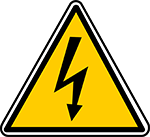Surge

Alternatively known as a line surge, overvoltage, or power surge, a surge is a short, fast rise in voltage that inherently causes an increase in electrical current or vice versa. Exclusive to electrical circuits, a power surge can cause damage or impairment to a computer or other devices.
For example, the standard voltage rating on a landline in the United States is 120 volts. If this rating is exceeded for more than three nanoseconds, it would be considered a surge. Any shorter duration is considered a spike.
Users can prevent damage from power surges with surge protectors.
A surge can also travel over a phone line. An unprotected modem may also cause damage to your computer.
What causes a surge?
The most common cause of a surge is an electrical storm lightning bolt that strikes a device connected to a power, phone, cable, or another wire. For example, a lightning bolt could strike a satellite dish. Then, the electricity could travel over the wire connected to that dish into a home and damage any electrical device that is not protected.
Other examples of what causes a power surge include ESD (electrostatic discharge), an appliance powering on or off, and physical damage to external power lines.
How does a power surge damage a computer?
Everything in a computer is powered by electricity. The standard delivery for wall sockets in the U.S. is 120V. However, a lightning strike is upwards of many millions of volts. This extremely excessive current generates excess heat, causing integrated circuits (among other things) to melt and be destroyed.
In some situations, it may be possible for a qualified technician to repair a computer fried (damaged) by a power surge. However, because of the difficulty and time required, many repair shops often only replace the damaged components.
Brownout, Current, Landline, Overvoltage protection, Power failure, Power terms, Spike
